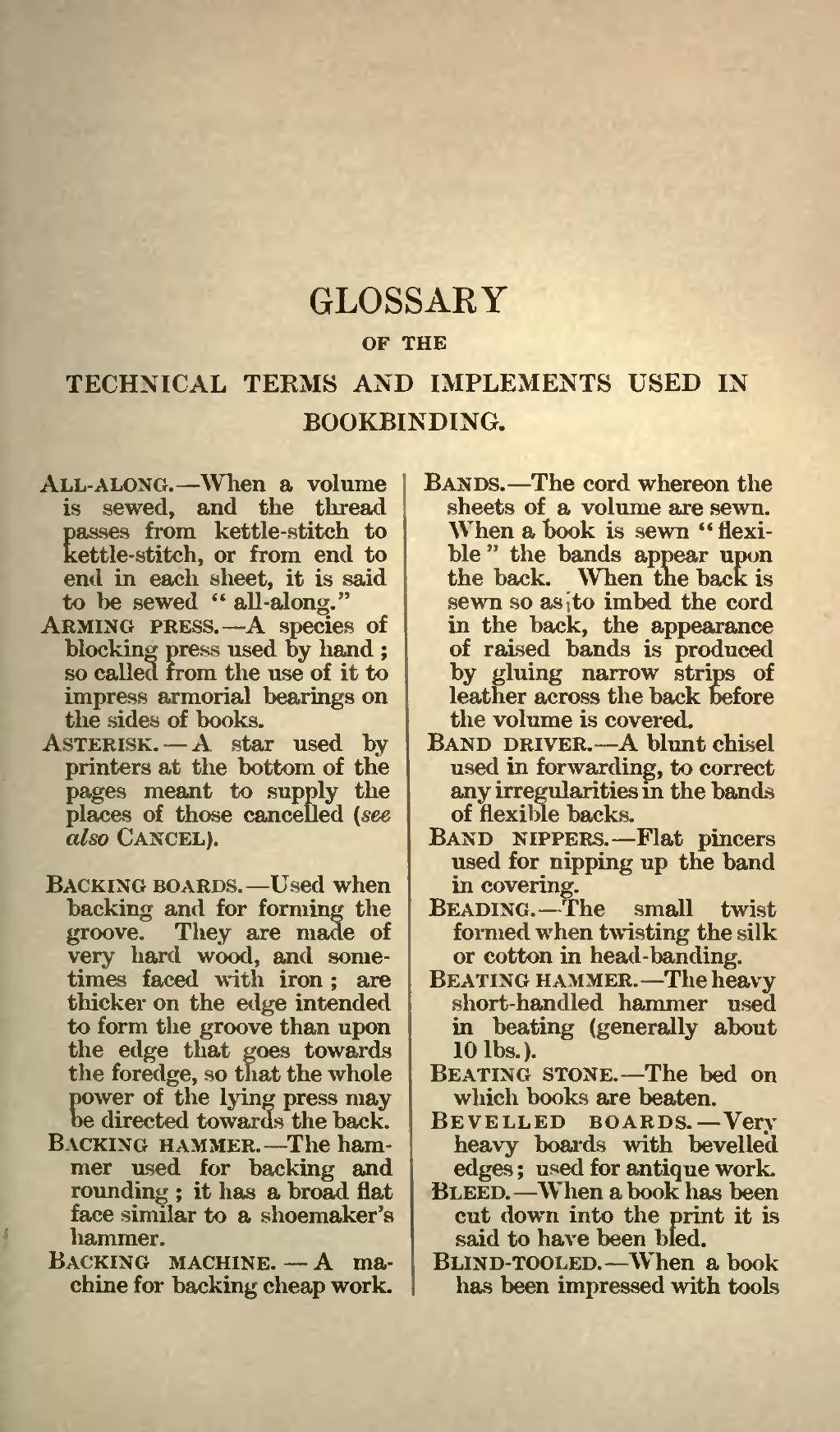GLOSSARY
OF THE
TECHNICAL TERMS AND IMPLEMENTS USED IN BOOKBINDING.
All-along.—When a volume is sewed, and the thread passes from kettle-stitch to kettle-stitch, or from end to end in each sheet, it is said to be sewed "all-along."
Arming press.—A species of blocking press used by hand; so called from the use of it to impress armorial bearings on the sides of books.
Asterisk.—A star used by printers at the bottom of the pages meant to supply the places of those cancelled (see also Cancel).
Backing boards.—Used when backing and for forming the groove. They are made of very hard wood, and sometimes faced with iron; are thicker on the edge intended to form the groove than upon the edge that goes towards the foredge, so that the whole power of the lying press may be directed towards the back.
Backing hammer.—The hammer used for backing and rounding; it has a broad flat face similar to a shoemaker's hammer.
Backing machine.—A machine for backing cheap work.
Bands.—The cord whereon the sheets of a volume are sewn. When a book is sewn "flexible" the bands appear upon the back. When the back is sewn so as to imbed the cord in the back, the appearance of raised bands is produced by gluing narrow strips of leather across the back before the volume is covered.
Band driver.—A blunt chisel used in forwarding, to correct any irregularities in the bands of flexible backs.
Band nippers.—Flat pincers used for nipping up the band in covering.
Beading.—The small twist formed when twisting the silk or cotton in head-banding.
Beating hammer.—The heavy short-handled hammer used in beating (generally about 10 lbs.).
Beating stone.—The bed on which books are beaten.
Bevelled boards.—Very heavy boards with bevelled edges; used for antique work.
Bleed.—When a book has been cut down into the print it is said to have been bled.
Blind-tooled.—When a book has been impressed with tools
